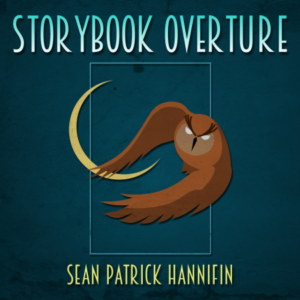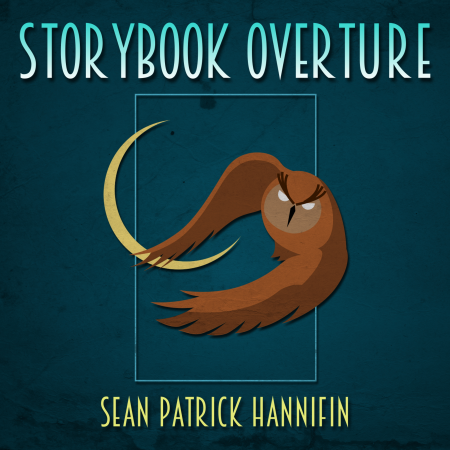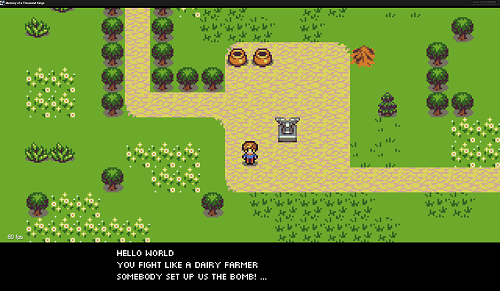Hello, and welcome to Composer’s Corner, where I say something about music and/or my composing process. Today I’m answering a question from Michael who writes:
I have a question about your use of chord progressions, from the first exercise you recommend.. [in this post] You said “So that was my method: find chord progressions that sounds good, write melodies for them, and vary the orchestration in different ways, all through trial and error.”
Can you elaborate on this. I’ve been working on this and what’s not clear is does one just repeat the chord progression over and over? or are there other chords mixed in?
I’ve found the hook theory website to be useful for studying chord progressions:
https://www.hooktheory.com/theorytab/common-chord-progressions
They say the most popular is I V vi IV. Would you give them 1 measure each which would make a total of 4 measures? And just repeat that over and over? When I analyze the chords in some songs I like, sometimes there is two measures of a chord and sometimes it’s just a half measure, etc. But I want to start simple.
I’m not able to “hear” the chord progressions in your songs. I think that’s something I need to work on. If I knew which chords were where, that would make it easier to understand. For most of my favorites on your first album I don’t think you’ve published the music. But if you can just describe a bit about which chord progression you used and how that would be very helpful.
Many thanks for the questions!
To answer the first part:
what’s not clear is does one just repeat the chord progression over and over? or are there other chords mixed in?
Either way. Some songs do indeed feature just the same chords over and over again. One of my first compositions, “The Workshop” (MP3 here), is just vi-vi-IV-V over and over. Another example is of course Pachelbel’s Canon in D, which is I-V-vi-iii-IV-I-IV-V over and over again. (Though I think he actually sneaks in an inverted I to replace the iii in some measures.)
Using the same chord progression over and over again may get monotonous, but one can add variety to the melodies and orchestrations. Pachelbel’s Canon manages to stay consistently interesting (in my opinion at least) because of the wealth of variety in the melodies. When I was just starting out composing, my pieces were a bit monotonous. But they helped me learn, and they were still fun to write! (Plus, there’s minimalism, a whole style of music dedicated to monotony! So it’s a subjective thing anyway.)
That said, my guess is that most songs feature multiple chord progressions to help spice things up. Maybe a chord progression for the verses, another chord progression for the chorus, and yet another for the bridge. They may be still be quite similar; maybe a few chords are just substituted for other chords, or they’re mixed around. After all, usually the style of music doesn’t change drastically between verses and chorus.
One common way to add variety is to start a new chord progression on a chord other than the tonic, commonly the V or vi, sometimes the IV. For instance, if you’ve been using I-iii-IV-V for a while, suddenly starting a new melody on vi with something like vi-V-IV-V may be quite interesting.
But, like I said, my first pieces featured chord progressions repeated over and over. It made things simple. I was practicing writing melodies to fit chords, so it was good practice. I wasn’t able to let chords and melodies inform the creation of each other until perhaps after a year or so of composing, after I got a feel for what sort of patterns I preferred.
They say the most popular is I V vi IV. Would you give them 1 measure each which would make a total of 4 measures?
Firstly, if you click on the examples on that website, you’ll see that that progression is often used as part of longer progressions rather than just by itself. But we can certainly use it by itself if we want to…
Anyway, to answer the question: Yep, one bar for each chord would work! Really, you can do anything you’d like, but one chord per measure or two chords per measure is very common, at least for the style of music I write. (Mozart, on the other hand, may go on the I chord for eight measures, IV for four measures, back to I for another four measures, then V-I-V-I-V-I-V-I on eighth notes squished into one measure; very different style!) As you observed in the examples, there can be a variety of squashing and stretching of the chords, but sticking to one or two chords per measure works fine for starting out. In fact, just one or two chords per measure is mostly what I still do.
Also, I typically write 8-bar melodies (which is probably the most common in modern songs). If I wanted to use just I-V-vi-IV, I’d probably double it, so it’s I-V-vi-IV-I-V-vi-IV. Of course it also depends on tempo and time signature and what rhythm you’re using; Pachelbel’s Canon melodies sound like 8-bar melodies to me, yet the scores I typically see have them all squished up into two bars.
I also pretty much never end melodies on the IV chord; it sounds very weak and pop-music-ish to me. I typically go for I or V, and sometimes iii or iv. So I was actually curious to try this out and so I just tried writing two melodies for I-V-vi-IV-I-V-vi-IV:
Ooh, that was fun! I might have to work that into a full piece, it seems kinda catchy to me…
So the first melody is a repeated 4-bar phrase:

And then to try it out with an 8-bar melody:
![]()
Just by trying that out, I found that in the last bar, it sounds (to me at least) pretty bad to end the melody on the root of the IV chord; sounds much better to end on the fifth of that chord (which is the tonic of the key) as I do in the first melody, or the third, as I do in the second melody (though that sounds a bit weaker to me). Anyway, just my opinion from some brief trial and error. (I could postulate some music theory reasons for why this might be so, but all that really matters in the end is how it sounds to me.)
So it definitely seems possible to write a short piece with just I-V-vi-IV repeated over and over… you’d probably just have to add in a V-I at the very end if you want to end on a strong cadence.
I’m not able to “hear” the chord progressions in your songs. I think that’s something I need to work on. If I knew which chords were where, that would make it easier to understand.
Yes, I think that can develop with experience and practice as you get familiar with how different chord progressions sound. Honestly, when listening to other people’s music, I often can’t hear the chords either, depending on what they are. I can usually hear when it changes, and if it’s major or minor (I reckon everyone can at least subconsciously, as it’s one of the driving forces of music), but to know exactly what it is in music theory terms, I need go look it up, or try playing it on a keyboard (and I’m not much of a keyboard player, so I’m usually too lazy for that). However, sometimes I can catch popular chord progressions, such as Pachelbel’s chords. And after I’ve been composing for a while, my ears will be a bit more sensitive to chords, but then my sense of them will fade away again. It would definitely be convenient to have perfect pitch for harmonic analysis! But, alas…
But if you can just describe a bit about which chord progression you used and how that would be very helpful.
An easy piece of mine to see the chord changes in is “Across the Kingdom”:
In this piece, all the chords are in root position, doubled in octaves in the cello and double basses. They’re just playing staccato notes throughout the entire piece, so basically anytime those two bottom lines move, it indicates a chord change.
So we start with the I chord, which changes at 0:20 to V (going down a fourth). Then up to vi, down to IV for a half measure, back to V for the second half of that measure. (Hey, lookey there, we got a I-V-vi-IV progression right there, hahaha, a nice coincidence!) The second half of the melody starts again with I, down to V, up to vi for a half measure, down to V for a half measure, and back up to I to end the melody on the tonic.
So (if I group half-measure chords into parentheses) the whole chord progression for that first melody is I-V-vi-(IV-V)-I-V-(vi-V)-I. And then it repeats along with the melody.
At 1:12, we have a new melody with a new chord progression, this time (I-IV)-V-(I-IV)-V-(I-IV)-V-I-I.
At 1:39, yet a new melody with yet a new chord progression. This chord progression is one of my favorites. (I-vi)-(IV-V)-(I-vi)-(IV-V) This repeats with various 4-bar melodies, until…
At 2:34, rather than repeat the chord progression, we get a slight variation of: (vi-iii)-(IV-V)-(vi-iii)-(IV-V).
After that variation, at 2:47, we’re back to what we had before, (I-vi)-(IV-V)-(I-vi)-(IV-V), until…
At 3:01 we go back to our minor variation, (vi-iii)-(IV-V)-(vi-iii)-(IV-V). This repeats until…
At 3:29, we’re back to (I-vi)-(IV-V)-(I-vi)-(IV-V)… at 3:43, the key itself jumps up a major third, but the chord progression itself is the same, just in the new key. And we pretty much stick with this very same chord progression, until ending the piece on the I. (On a side note, I love shifting the key up a major third in between melodies. It always seems exciting to me.)
So that whole piece only has 4 chord progressions, the great bulk of it being that (I-vi)-(IV-V)-(I-vi)-(IV-V) repeated over and over. I could write melodies for that chord progression forever.
As to how exactly I came up with those particular chord progressions, I couldn’t say off the top of my head. There’s always quite a bit of trial and error for me, and after you’ve been composing for a while, you start to get a “feel” for where your subconscious wants the music to go. I probably composed the first melody on the keyboard, then found chords for it that I liked, then sort of let my subconscious guide me from there. Sometimes it seems to flow from the subconsciously rather nicely; other times, I can be experimenting for hours and hours before I get something that I like. Many times, if you can come up with a melody in your head or on a keyboard, you’ll find that it naturally fits multiple common chord patterns, then it’s just a matter of what you prefer, how fancy you want to get, and how much time you want to spend exploring the possibilities. Just I, IV, and V cover all the tones of a particular key, so you could possibly harmonize any diatonic melody with just those chords. (Though that might get boring pretty fast, but you could. Mozart did it sometimes!)
When I was just starting to compose, I’d go searching on the internet for chord progressions to try from guitar tab sites and such. I also bought a couple “fake books” just for the chord progressions; those can be handy. And I like the website you linked to, Hooktheory. I hadn’t visited that site in a while; they’ve expanded quite a bit since I last visited. I still go scrounging around on the internet for chord progression ideas now and then. I’m trying to use more chords borrowed from other keys and more seventh chords, for instance. It’s always fun to find the chords to a song you like, particularly a specific part that you enjoy, and find out what exactly is going on there, and then try to use something similar in your own work.
OK, I hope that wasn’t too long-winded! Hope this helps!
(Composer’s Corner is sponsored by… Storybook Overture, a great album. Buy it today!)






